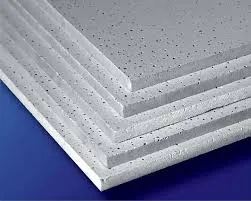- Afrikaans
- Albanian
- Amharic
- Arabic
- Armenian
- Azerbaijani
- Basque
- Belarusian
- Bengali
- Bosnian
- Bulgarian
- Catalan
- Cebuano
- Corsican
- Croatian
- Czech
- Danish
- Dutch
- English
- Esperanto
- Estonian
- French
- German
- Greek
- Hindi
- Indonesian
- irish
- Italian
- Japanese
- Korean
- Lao
- Malay
- Myanmar
- Norwegian
- Norwegian
- Polish
- Portuguese
- Romanian
- Russian
- Serbian
- Spanish
- Swedish
- Thai
- Turkish
- Ukrainian
- Uzbek
- Vietnamese
nov . 07, 2024 13:04 Back to list
PVC Grid Ceiling Tiles for Modern Interior Design Solutions
Understanding PVC Grid Ceiling Tiles A Practical Guide
When it comes to interior design and renovation, ceiling options play an essential role in the aesthetics and functionality of a space. Among the various choices available today, PVC grid ceiling tiles have emerged as a popular and practical solution for both residential and commercial settings. This article will explore the benefits, applications, and installation of PVC grid ceiling tiles, providing a comprehensive understanding of this versatile design element.
What Are PVC Grid Ceiling Tiles?
PVC grid ceiling tiles are made from polyvinyl chloride (PVC), a synthetic plastic polymer that offers numerous advantages over traditional ceiling materials. These tiles are designed to fit into a grid system, typically made from metal or PVC, which is suspended from the ceiling framework. This grid system allows for easy installation and removal of tiles for maintenance and repairs.
Benefits of PVC Grid Ceiling Tiles
1. Durability One of the standout features of PVC tiles is their durability. They are resistant to moisture, mold, and mildew, making them ideal for areas subjected to humidity, such as bathrooms, kitchens, and basements. This resistance also extends the lifespan of the tiles, ensuring that they maintain their appearance over time.
2. Lightweight PVC tiles are significantly lighter than traditional ceiling materials, such as plaster or wood. This lightweight nature simplifies the installation process and reduces the structural load on the building.
3. Easy to Install The grid system allows for straightforward installation, even for those without extensive DIY experience. Many PVC ceiling tiles can be easily cut to fit specific spaces, and most grid systems are designed to accommodate various tile sizes.
4. Design Versatility PVC grid ceiling tiles come in a wide array of designs, colors, and textures, allowing homeowners and designers to create a customized look that suits any space. Whether you seek a sleek, modern aesthetic or a classic, decorative appearance, there is a PVC tile option to match your vision.
5. Low Maintenance Unlike other ceiling materials that may require regular painting or sealing, PVC tiles are easy to clean and maintain. A simple wipe down with a damp cloth is often enough to keep them looking fresh and new.
Applications of PVC Grid Ceiling Tiles
pvc grid ceiling tiles

PVC grid ceiling tiles can be used in various applications, from residential living spaces to commercial environments. In homes, they are frequently employed in kitchens, bathrooms, and basements. In commercial settings, PVC tiles can be found in offices, retail spaces, healthcare facilities, and educational institutions. Their moisture resistance and durability make them particularly suitable for high-traffic and high-humidity areas.
Installation Process
Installing PVC grid ceiling tiles typically involves several steps
1. Preparation Measure the ceiling area to determine how many tiles and grid components are needed. Clear the space of any furniture or obstacles.
2. Install the Grid First, install the grid framework according to the manufacturer's instructions, ensuring it is level and securely anchored to the ceiling joists.
3. Cutting Tiles If necessary, measure and cut the PVC tiles to fit around light fixtures or other obstructions.
4. Place the Tiles Insert the tiles into the grid system, ensuring they fit snugly and securely.
5. Finishing Touches Once all tiles are installed, double-check the alignment and make any necessary adjustments.
Conclusion
PVC grid ceiling tiles offer a modern solution for those looking to enhance their interior spaces without the hassle of traditional ceiling materials. With their durability, easy installation, and design versatility, they present an excellent choice for both residential and commercial applications. Whether you are renovating an existing space or designing a new one, consider the benefits of PVC grid ceiling tiles as a stylish and functional option.
-
Transform Interiors with PVC Gypsum Ceiling: A Stylish, Durable, and Moisture-Resistant SolutionNewsMay.19,2025
-
The Smart Interior Upgrade: Discover the Durability and Versatility of Gypsum Ceiling Access Panel SolutionsNewsMay.19,2025
-
The Smart Choice for Interior Design: Discover the Value of PVC Gypsum Ceiling SolutionsNewsMay.19,2025
-
Mineral Fiber Ceiling Tiles: The Smart Blend of Performance and AestheticsNewsMay.19,2025
-
Mineral Fiber Ceiling Tiles: The Superior Choice Over Gypsum for Sound and Fire SafetyNewsMay.19,2025
-
Mineral Fiber Ceiling Tiles: Eco-Friendly Strength and Style for Every CeilingNewsMay.19,2025







